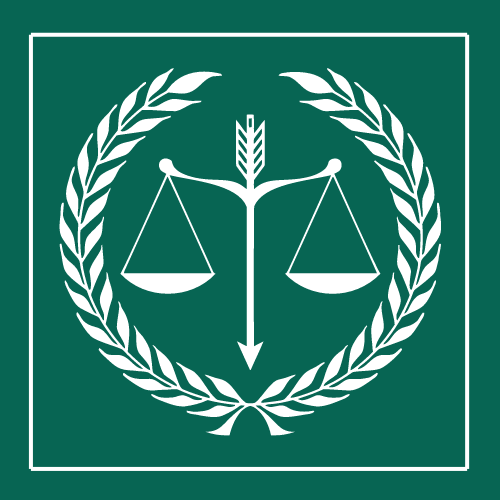The Common Enemy Doctrine is a legal principle that greatly impacts property rights and water drainage issues. At BruegelPC, with our expertise in divorce law, we understand how this doctrine can influence the division of property and marital assets. In this article, we will explore the origins of the Common Enemy Doctrine and its current applications. We aim to give you a clear understanding of how this doctrine might affect your property and legal standing during a divorce.
On the authority of Cornell Law School, the common enemy doctrine holds that landowners can protect their property from surface water as they see fit, without liability for water damage to others. Thus, they have the right to divert or expel water. This doctrine is subject to limitations if actions are found to be intentionally harmful or negligent.
Introduction to Common Enemy Doctrine
The Common Enemy Doctrine is a legal principle enabling nations to join forces in combating mutual threats like terrorism or organized crime through extradition and cooperation.
To break it down, this idea is about countries putting aside their differences to work together against a common danger for the good of everyone involved. It encourages nations to cooperate and tackle global threats that no single country can manage on its own. The Common Enemy Doctrine believes that by joining forces, countries can better handle shared problems and protect their people’s safety.
In general terms, this idea is often used when countries need to extradite criminals or share intelligence to fight a common enemy. It understands that to effectively deal with cross-border threats, countries must be willing to collaborate and share their resources, information, and skills. By following the Common Enemy Doctrine, nations can boost their joint efforts to handle security challenges and keep peace and stability worldwide.
Historical Background
The historical background encompasses pivotal events and influential figures that have sculpted distinct eras throughout history.
It seems that, this text talks about important things that happened in the past, like wars, revolutions, and big changes in culture and society. Knowing the history behind these events helps us understand and explain why they happened and what they mean.
When historians study the history of a certain time, they can learn why people and societies did what they did. This background also helps us see why certain events took place and how they impacted what came later.
Come to think of it, the history of a time period can also show us what life was like back then, including the social, political, and economic conditions. This helps historians spot patterns and trends that have guided history.
In general, knowing the historical background is very important for studying the past and understanding its effect on today. It helps us make sense of historical events and see connections between different periods. By looking at the historical background, historians can better understand the complex story of human history and what has shaped our world.
Key Principles and Rules
As was previously noted, key principles and rules function as vital frameworks, ensuring order and direction across different areas of life.
To be brief, principles are basic beliefs or values that help guide our actions and decisions. Rules are specific instructions about what is okay or not okay to do in certain situations.
Both principles and rules are important because they keep things running smoothly, ensure fairness, and help people and systems work well together. They are the backbone of ethical behavior, helping us handle tricky situations and make good choices.
In business, important principles and rules create an environment of honesty, integrity, and responsibility. They help companies act ethically, treat workers and customers fairly, and follow the law. Let me explain, in personal relationships, principles like honesty, trust, and respect are key to good interactions and understanding each other.
In education, principles and rules set the stage for learning, outlining what is expected in terms of behavior and academic performance. Teachers use them to create a positive and productive classroom, while students use them to set their goals and monitor their progress.
In short, principles and rules are essential for creating order, encouraging teamwork, and promoting ethical behavior in many areas of life. By following these principles and rules, people and organizations can build trust, reach their goals, and contribute to a better society.
Legal Cases and Examples

Focusing on earlier analyses, legal cases often serve as fascinating precedents, shaping future interpretations of law and showcasing the complexities of human behavior and justice.
In short, legal cases can deal with different issues like contract problems, criminal charges, or family disputes. In a legal case, both sides show their arguments and evidence to a judge or jury, who then decide based on the facts and the law.
For example, in a civil lawsuit, one person might sue another for damages from a car accident. The person suing (the plaintiff) would need to prove that the other person (the defendant) was careless and caused the accident, leading to injury or harm. The defendant can then present their evidence to challenge these claims.
In other words, in another example, a criminal trial, the state might accuse someone of breaking the law. The prosecution shows evidence that the person committed the crime, while the defense presents evidence to argue against this. The judge or jury listens to both sides before making a decision.
Legal cases can be simple or complex and may include many parties, witnesses, and legal issues. It is important for everyone involved to have good legal help to make sure their rights are protected and the case is handled fairly.
Impact and Modern Relevance
Building on an earlier idea, impact is the driving force behind change, shaping situations and lives significantly in modern society.
In general, the effects of something can be either good or bad, depending on the situation. Understanding these effects matters because it shows us what results from our actions and decisions.
Modern relevance means how important or useful something is today. It’s important to think about this when looking at history or old ideas to see what they mean for us now.
The effects and modern relevance of a topic are connected. By studying what happened in the past, we can see how it matters today. Learning from past events helps us make better choices now. Essentially, our world changes quickly, so it’s very important to think about the effects and modern relevance of different things to keep up and succeed.
Whether it’s politics, the economy, technology, or culture, knowing how different factors affect us helps us handle today’s challenges. In short, looking at effects and modern relevance helps us make better decisions and create a better future. By seeing the results of our actions and understanding how the past shapes the present, we can aim for a more sustainable and successful world for future generations.
To Wrap it All Up
Based on what we observed, in conclusion, the common enemy doctrine highlights how individuals or groups can come together to unite against a shared threat or adversary.
What BruegelPC is encouraging to take up is, this principle has been prevalent throughout history in various contexts, emphasizing the power of solidarity in overcoming challenges and fostering cooperation among divergent parties.
Ultimately, the common enemy doctrine underscores the importance of finding common ground in order to achieve collective goals and objectives.

